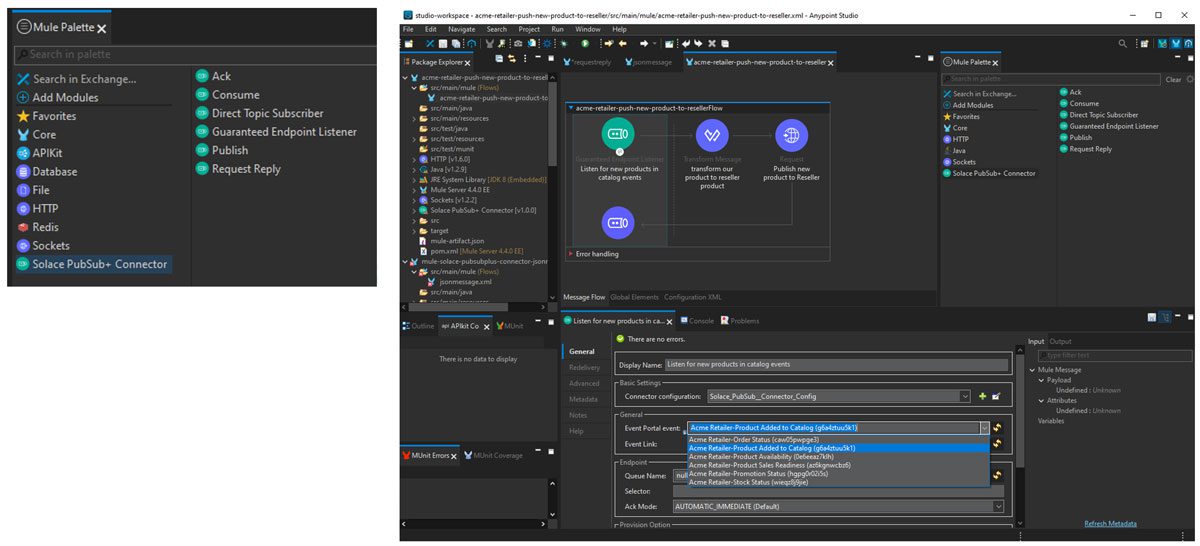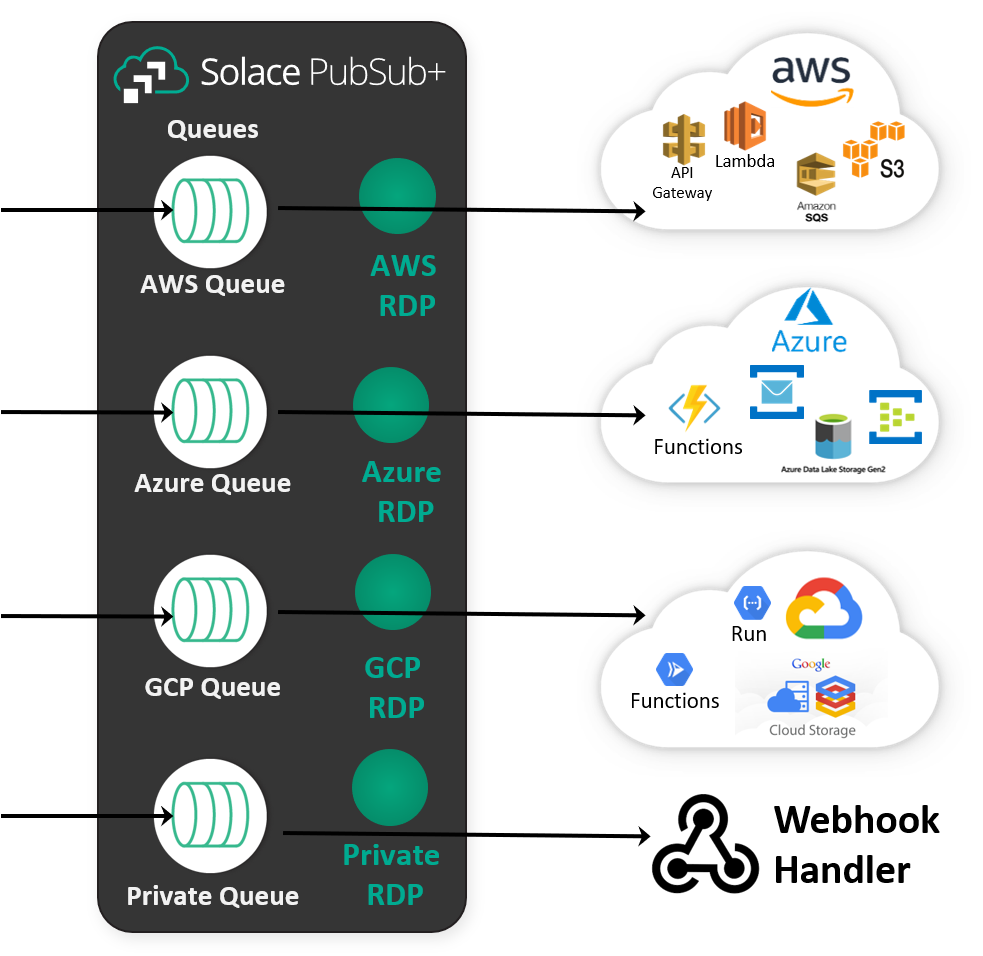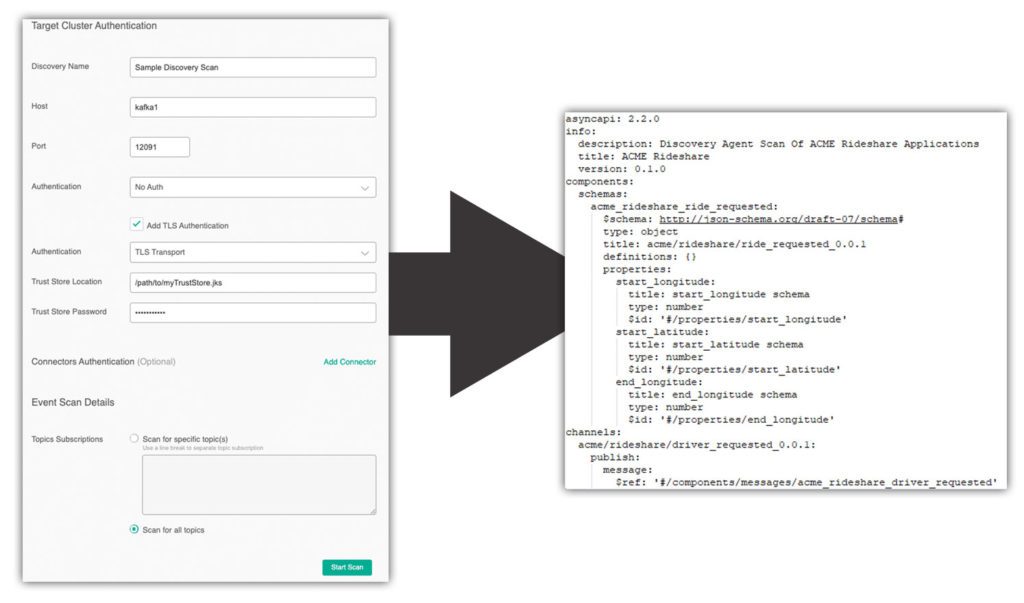In June of 2019, Solace took aim at making it easier for enterprises to benefit from event-driven architecture with the announcement of a strategic initiative called Event Horizon – so named because we believed we were skating to where the puck was going to be, as my hockey hero Wayne Gretzky famously advised.
We’d been helping companies and industries that have always revolved around real-time data (financial services, telecom and manufacturing) implement EDA for almost two decades, but were seeing more companies in industries that haven’t historically needed real-time distribution of data realize they need it to support things like their migration to the cloud, implementation of microservices, and the Internet of Things.
Our belief that EDA was about to go mainstream – validated by a recent survey that indicated 85% of organizations are actively implementing EDA, by the way – was paired with the observation that many of these companies were not set up for success. Simply put, they were saddled with the technical debt, sub-par capabilities and outdated assumptions associated with being in less real-time, data-centric markets.
We wanted to not just build technology that would help them get started and succeed, but to offer programs that helped them learn and grow as part of the EDA community, and support the open source community and projects that are such an important part of modern enterprise IT.
We’ve made a lot of progress on those fronts, and just announced a series of important advances, so I wanted to give some insight into the accomplishments and upcoming things we announced earlier today.
Fostering Community Among EDA Thought Leaders
One of the most exciting things we’ve accomplished as part of Event Horizon is bringing to life EDA Summit, which has quickly established itself as a great way for analysts, in-house practitioners, systems integrators and solution providers to come together to share ideas and work together to help enterprises derive more business value from EDA. The program got off to a strong start with an inaugural virtual conference in May of last year, and the organizers of Blueprint LDN in London saw fit to run a mini EDA Summit track in their “Modern Software Architecture Theatre.”
Building on that success, the 2022 instance of the virtual conference has been scheduled for May 4, 2022, and a new series of free educational webinars called the “EDA Summit Series” kicks off next week. In this first “Summit Series” webinar, called Best Practices for Event Enabling your Enterprise Integration Platform, Chris Aron of SAP and Forrester Senior Analyst David Mooter will help attendees understand how leading enterprises are leveraging event-driven architecture to modernize their integration. If you’re interested enough in EDA to be reading this post, I suggest you check it out! (and if you’re reading this after the fact, you can watch the on-demand version on the EDA Summit website.)
Advancing the State of the Art of EDA-enabling Tools
We’ve accomplished a lot on the product side since the launch of Event Horizon, especially in the event management arena where we brought to market the first event portal. More recently, we’ve been focused on making it easier to deploy our EDA platform into any environment, and to integrate it with all of your existing assets. We announced a bunch of good stuff last month in the Winter Solace Product Update that I hosted and summarized with this blog post, and teased some stuff that was coming soon. Here’s a few of the things that have come together since then that we just announced.
Enabling Event-Driven Integration
Our goal is to be the preferred EDA vendor for event-driven integration, and we have just announced that we’ve added a new event connector for Mulesoft Anypoint Platform to the library of similar event connectors for Boomi and SAP Integration Suite (formerly known at Cloud Platform Integration).
The new Anypoint event connector lets users access our event brokers and event portal capabilities from Anypoint Exchange, so no code to gather & import, as you can see here. While we’ve had a JMS connector for Anypoint for some time, our users wanted better access to more capabilities of the PubSub+ Platform – so that’s what we have delivered. This new event connector gives you access to more features and message exchange patterns. In terms of event management, not only does the event connector let you search for and import events from PubSub+ Event Portal, but the event schemas you import will automatically populate Mule Message payload definitions to then perform transformations from one schema to another as you’d expect to do in the Anypoint Platform.
Availability in Cloud Marketplaces
As part of our commitment to making our platform available natively within the leading cloud providers, the PubSub+ Platform is officially available for purchase in the Azure Marketplace, AWS Marketplace and Google Marketplace. This means customers can use promotional credit provided by their cloud provider to purchase PubSub+ cloud services, allowing them to stream events to and from cloud workloads over a public or a private connection – without complex configuration and sizing.
Our platform has been available in AWS Marketplace since last year and will be extended into Google Cloud Marketplace and other leading marketplaces throughout 2022.
Simplifying the Integration with Cloud Assets
We’ve also unveiled sophisticated new connectors integrated in our event broker that make it easy to link legacy applications with cloud-native services and serverless functions, starting with connectors for AWS, Azure and Google Cloud Platform. With these provider-specific connectors you can do things like trigger serverless apps in Azure Functions or Google Run, store raw events into Google Storage, or push events in SQS, all without any coding, and no connector runtimes to deal with.
As you can see in the diagram the connectors are based on REST delivery points (RDPs) provided from the event broker, which you can learn more about by reading my colleague Rob’s blog post Simplifying the Integration of Cloud-Native Services and Data Lakes with Enhanced REST Delivery Points.
API for Go
By popular demand, we’ve unveiled client library APIs for the popular Go programming language. We’ve been getting a lot of demand for the Go API in particular, and are excited to get it into the hands of antsy developers! The initial release supports direct messaging, persistent messaging, broker connectivity including SSL/TLS and compression, and authentication functionality. You can learn more here, and if you want to get your hands on the early access version, join the GoLang group at solace.community.
Supporting Open Standards with AsyncAPI Event Discovery Tool
The last new thing I’d like to focus on is an open source version of our event portal product’s event discovery feature. The tool, called AsyncAPI Discovery Tool, analyzes event traffic passing through brokers like Kafka, RabbitMQ, IBM MQ, Solace, and more. After learning how the broker distributes events, the AsyncAPI Discovery Tool generates a corresponding AsyncAPI specification. The generated spec can be used for code generation, documentation, visualization, infrastructure deployment, and more. Needless to say, this can be a big help for folks that know EDA and messaging but new to AsyncAPI.
The AsyncAPI Discovery Tool runs as a stand-alone Java Jar, so getting it running requires only Java and Maven. Once it’s up and running, AsyncAPI has its own self-contained UI, so you can click the “Start Scan” button, wait for it to do it’s thing, and enjoy the consolidated spec file that describes the channels and schemas of events passing through the broker. From there, the world is your oyster: generate code, create infrastructure, or start governing your events.
People have already used this open source tool to build agents that can discover events in Apache Kafka, Solace PubSub+, NATS, RabbitMQ and HiveMQ brokers. In fact, the tool was named runner up in the inaugural AsyncAPI Hackathon late last year. It was built with extensibility in mind, so if you’re interested in adding some other broker check out the plug-in architecture and initiate a pull request. To get some background and learn more, check out my colleague Jesse’s blog post Align Production Reality and Event Documentation with the AsyncAPI Discovery Tool.
Conclusion
As CTO and chief product officer I’m really proud of all the advances our amazing engineering team has made, but I’m even more proud of the many ways in which we continue to complement those R&D efforts by fostering the kind of practitioner community and partner ecosystem it takes to make it as easy as possible for all enterprises, of any level of sophistication, to implement and benefit from EDA.
Trust me when I say this is just the beginning! To stay on top of things, subscribe to our newsletter and/or join the discussion over in our lively community.
Explore other posts from categories: Product Updates | Products & Technology

 Shawn McAllister
Shawn McAllister




